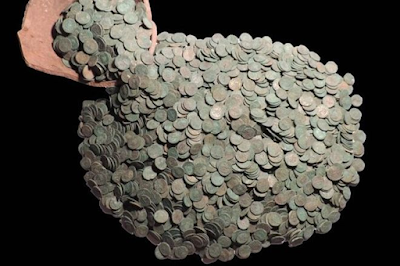 | More than 3,000 copper alloy coins were found by two metal detectorists near the village of Rauceby, Lincolnshire, in July 2017. The coins were found in a ceramic pot, buried in an oval pit and may have been buried as part of a ceremony, or votive commemoration. The coins have been declared treasure following an inquest hearing. |  |
Saturday, May 18, 2019
Lincolnshire Roman coin hoard - 'largest find in Britain'
Wednesday, May 1, 2019
Apophis in Earth fly past on Friday the 13th in 2029
 The asteroid's proximity and size will add to it's brightness, so Apophis will capture eyeballs — about 2 billion people should be able to see it pass by. The asteroid's proximity and size will add to it's brightness, so Apophis will capture eyeballs — about 2 billion people should be able to see it pass by. | Apophis stretches about 1,100 feet (340m) across and will pass within 19,000 miles (31,000km) of Earth. That might sound worrisome, but scientists say it will not hit Earth, this time. Scientists pinpointed Apophis' trajectory in 2029 to within a path just 7.4m (12 km) wide thousands of miles away from Earth. They can't rule out an impact decades in the future. |  |
Subscribe to:
Comments (Atom)
